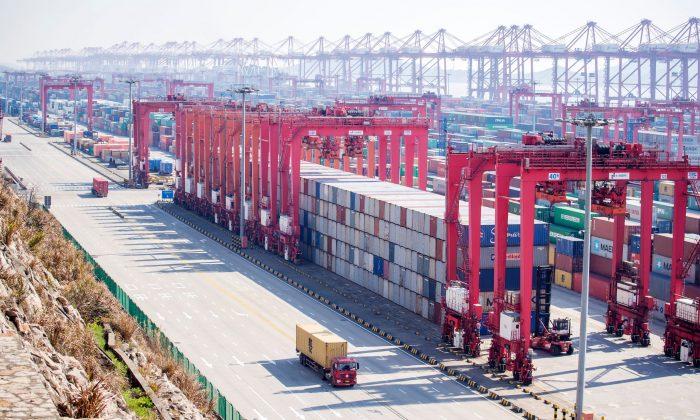The U.S.-China Economic and Security Review Commission (informally, the U.S.-China Commission or USCC) reported that Chinese exports to the United States are falling over three times faster than U.S. exports to China.
USCC expects recently announced tariff increases by both the United States and China will lead to further contraction in both imports and exports for the months ahead.
The 2018 total U.S. annual goods deficit with China was $419.3 billion, with a deficit of $223 billion for the first seven months that year. In 2019, the total U.S. goods deficit through July fell to $199.8 billion.
China leveraged its low wage and non-existent labor and pollution standards to rapidly expand manufacturing capacity in consumer electronics beginning in the 1990s. China initially offered tax holidays to attract foreign companies to assemble low-value electronics like cameras, monitors, and microphones.
Foreign companies wanting to “gain a foothold in China’s consumer market” were required as a pre-condition to form joint-ventures that included technology sharing agreements. China domestic competitors—many of them spinoffs from state-owned enterprises (SOEs) or joint ventures controlled by SOEs—at first produced low-cost gear of inferior quality. But as SOEs outcompeted foreign firms by leveraging production economies of scale with tech transfer quality improvements, supply chain product designers increasingly “sought to prototype more cutting-edge equipment in China.”
Despite the Sino-U.S. trade war shrinking exports to push China into its first negative balance of payments in 25 years, Beijing cut taxes by $163.7 billion (1.17 trillion yuan) in January and another $70.8 billion (506.5 billion yuan) in June to steady employment.
To fund spending, the Chinese regime approved a total of $306.6 billion (2.19 trillion yuan) special purpose bonds (SPB) for local governments to fund specific projects. To further boost local construction activity, China regulators adjusted infrastructure financing rules in June 2019 to count special bond revenue as equity. By eliminating the treatment of SPBs as debt, Chinese banks can further leverage project financings.
For Guangdong, which has the largest provincial budget and is China’s least debt-laden province, tax revenue growth decelerated from 13.3 percent year-on-year in the first half of 2018 to 2.4 percent versus last year; while expenditure growth accelerated from 3.4 percent to 13 percent.
Guangdong has joined other provinces in selling off or leasing state-owned assets to raise extra revenues. According to Chinese business and financial journal Caixin, Guangdong sales generated $5.6 billion (40 billion yuan), up 65 percent over the same period last year.






Friends Read Free